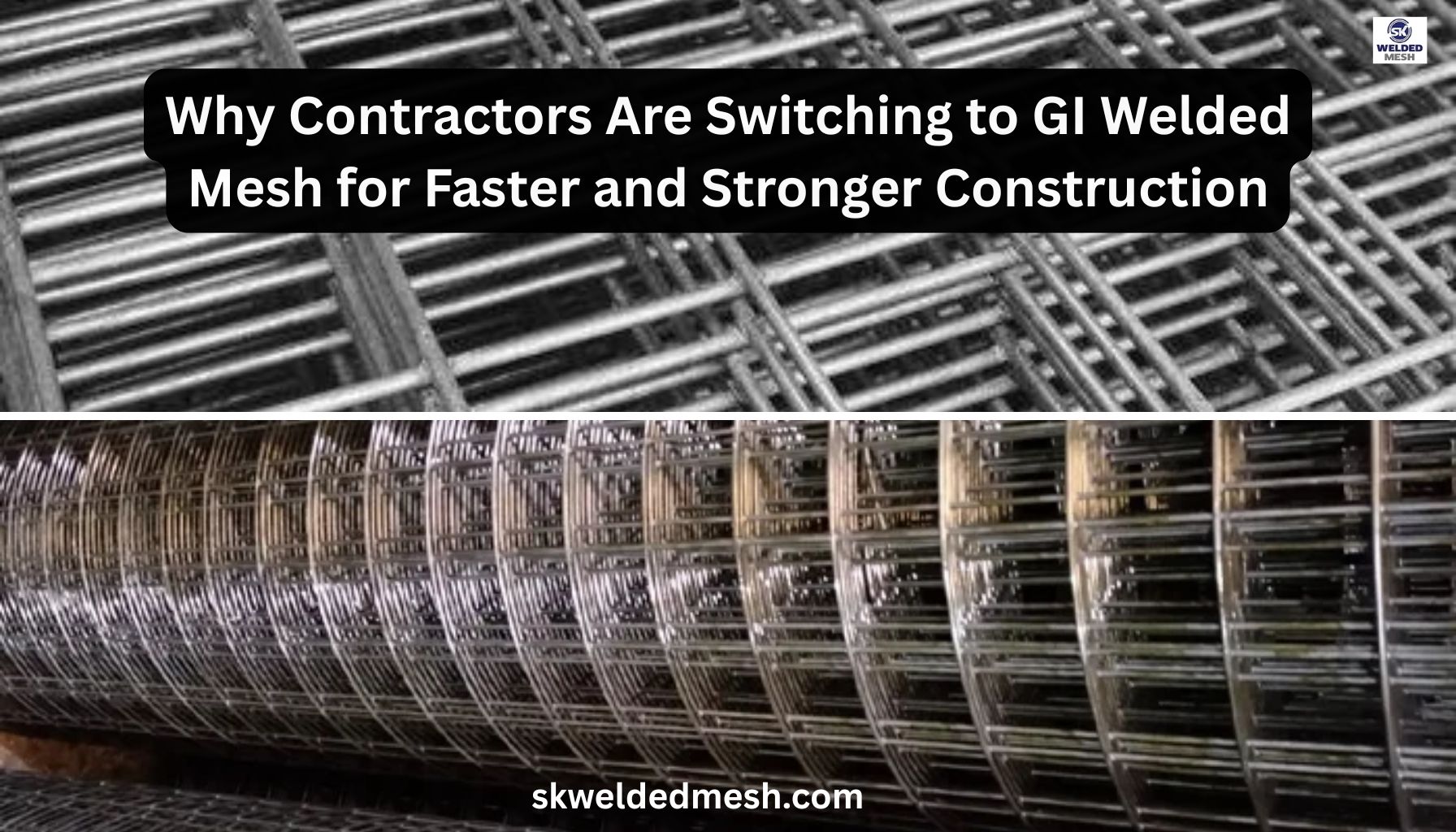

You can’t pour fast if the foundation keeps slowing you down. That’s the trade-off more contractors are questioning. When timelines tighten and pressure builds across zones, you need materials that work with the pace, not against it. GI welded mesh has quietly become the go-to in that regard. It simplifies site work, handles pressure, and keeps structural quality consistent across slabs, bridges, stations, and more. You’ll spot it across rail corridors, civic infra builds, and high-volume projects where schedule slips carry real cost.
Let’s walk through why more crews now ask for GI mesh before the first pour even begins.
GI welded mesh does more than reinforce; it streamlines. It arrives pre-welded, pre-cut, and galvanized for resistance. Once it’s placed, it stays where it’s supposed to, even under vibration, heat shifts, or back-to-back pours.
Unlike loose rebar that needs manual spacing and tying, these mesh panels hold their geometry under load. On one rail depot site, pre-cut GI mesh helped crews speed up setup without giving up precision around slab edges or anchor zones.
Where pressure builds, so does the value of accuracy.
Manual rebar tying eats into time and labor. Even with trained hands, it’s hard to maintain spacing, edge cover, or uniform density.
GI welded mesh skips all that. It saves hours in setup and reduces the number of touchpoints per pour. Fewer steps mean fewer delays.
One client we worked with swapped to mesh across a civic basement pour. Instead of adjusting mid-shift, the team completed the pour in one go—with embedded sleeves, plumbing gaps, and edge forms already accounted for.
In fast-paced infrastructure builds, the smallest gains ripple outward. GI welded mesh helps in more ways than one:
We’ve seen GI welded mesh hold its own across very different settings. On one overhead bridge job, the panels arrived zone-wise, pre-cut, and labeled for sequence.
Crews moved fast—lifting, placing, and pouring without rework or on-site cutting. Time saved on one phase helped the rest of the build stay on track.
Another team used GI mesh in ballast less track beds for a smart rail corridor. The mesh held steady under vibration and thermal expansion. Even during post-pour inspections, layout deviations were minimal. The structure matched the plan and the crew stayed ahead of schedule.
When your material performs like this in the field, it earns its place in the next spec sheet.
GI welded mesh works quietly but shows up where it counts. We’ve worked with contractors, engineers, and public developers who needed consistency without extra hand-holding. If you’re planning a project where timelines matter and results carry weight, we’re here to support that build from the base up. Get in touch with us today.